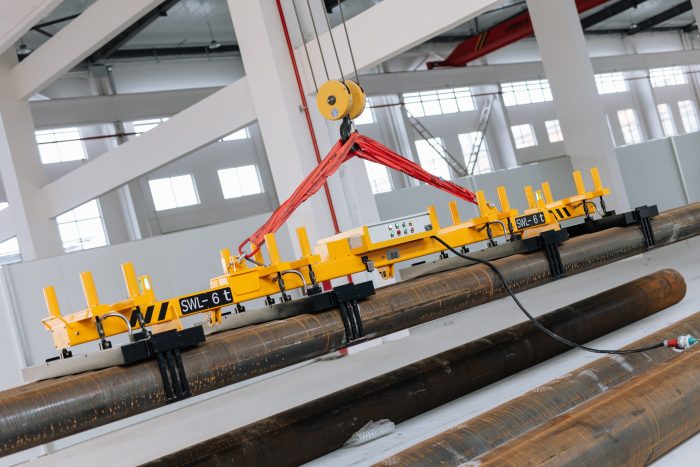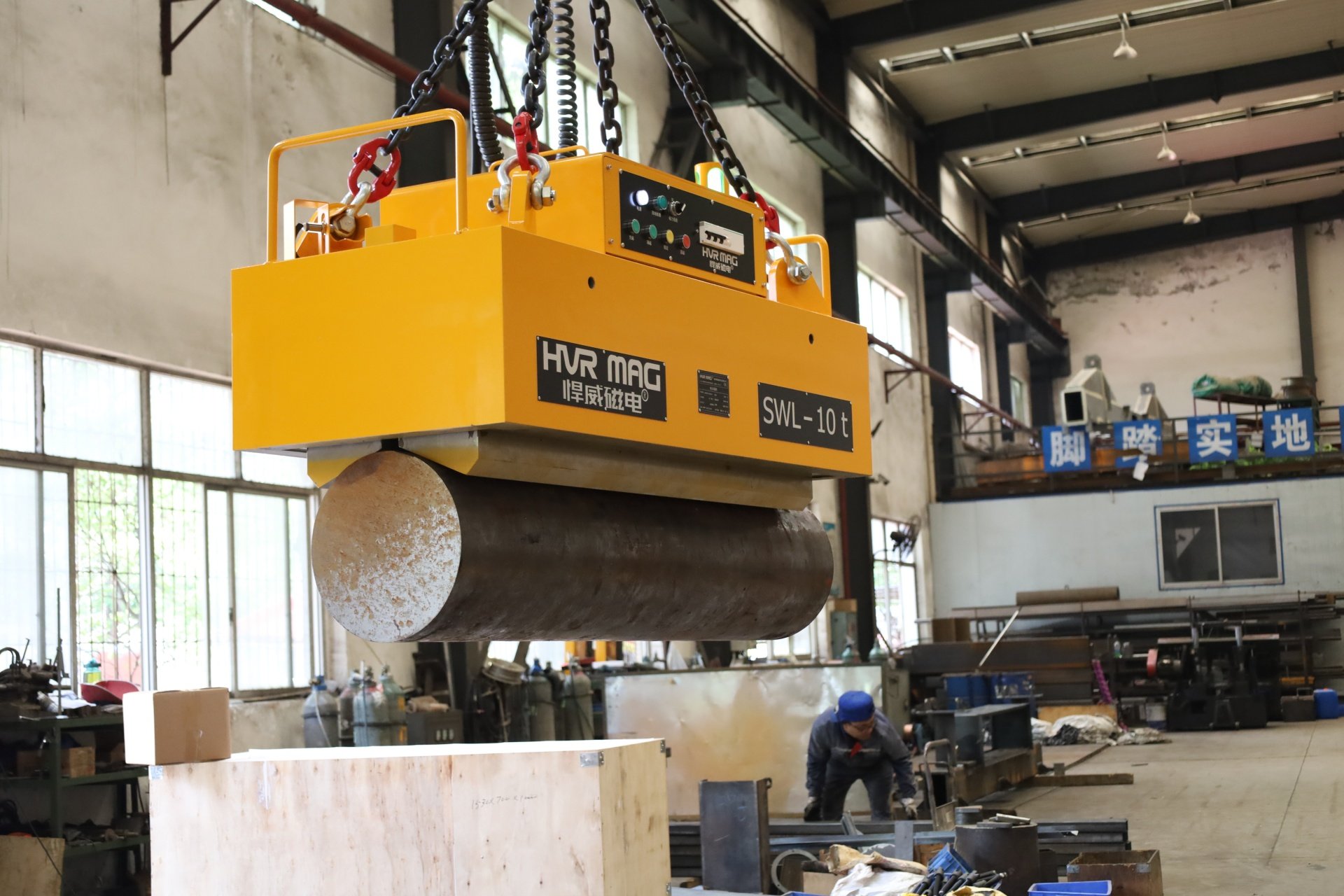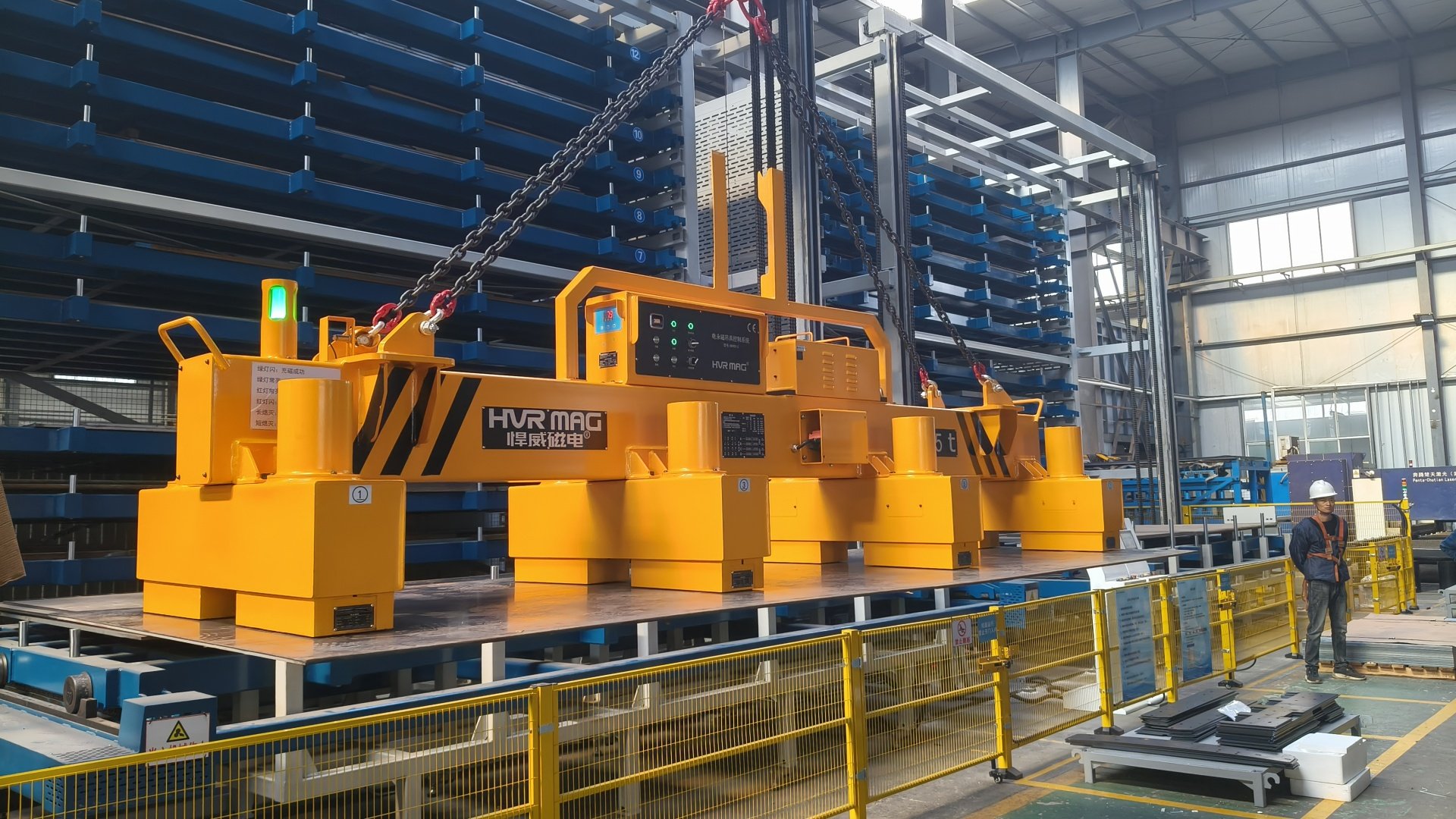Lifting heavy steel pipes safely and efficiently is a major challenge in manufacturing, many companies now use magnetic steel pipe lifter systems. But when is the best time to use this technology? Should you use it for raw billets or after precision machining? This blog explores the ideal application timing.
Why Use a Magnetic Steel Pipe Lifter?
First, let’s see why this tool is popular. An electric permanent magnetic steel pipe lifter offers contact-free handling. It is incredibly efficient and energy-saving. Therefore, it minimizes surface damage and improves safety. These features make it a great choice for the steel industry.
Steel Pipe Lifter Application in the Raw Billet Stage
Steel pipes in the blank stage are rough, heavy, and often hot. They can have scale on the surface. Traditional clamps might slip on these uneven surfaces. However, an electro permanent lifting magnet works very well here.
Key advantages for Steel pipe handling include:
- High Efficiency: The lifter enables fast pickup and release.
- Strong Safety: Magnetic force is reliable, even on rough surfaces.
- Heat Resistance: Special designs can handle high temperatures.
- No Damage: Contact-free lifting protects the raw material.
Nevertheless, you must consider the oxide layer’s effect on magnetic force. Also, for very high temperatures, check the equipment’s limits.
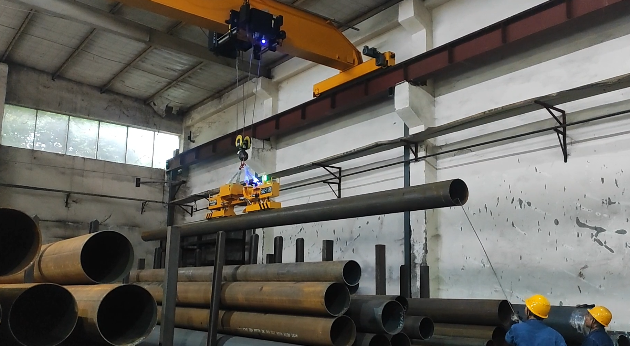
Steel Pipe Lifter Application After Precision Machining
Finished pipes have smooth surfaces and precise dimensions. They are high-value products. Protecting their perfect finish is critical. So, is a steel pipe lifting magnet suitable here? The answer is sometimes.
Good scenarios for finished pipe lifting:
- Surface Protection: Magnets prevent scratches from mechanical contact.
- Thin-Wall Pipes:Magnetic force spreads evenly, avoiding dents.
- Automation:These lifters integrate easily into smart factories.
However, there are important limitations:
- They cannot lift non-magnetic stainless steel pipes.
- Some protective coatings might be sensitive to strong magnets.
- For thin pipes, you need precise magnetic control to prevent deformation.
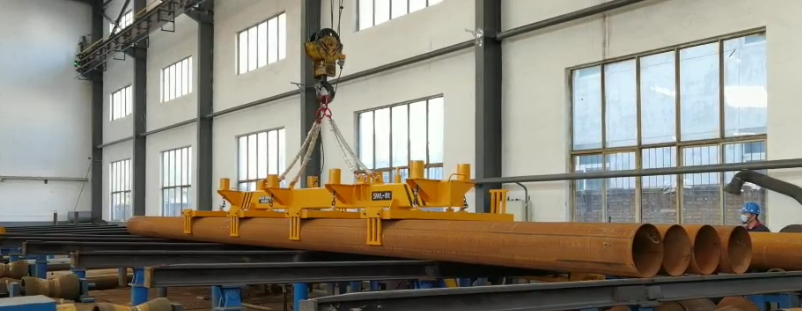
Comparison and Final Recommendation
So, which stage is better? We can see clear differences.
Generally, the billet stage offers a wider application. The safety benefits are more obvious with heavy, irregular loads. Conversely, using a magnetic steel pipe equipment for finished products requires more careful checks.
For lifting solutions for Steel pipe in the blank stage an electric permanent magnet lifter is often the top choice. It boosts efficiency and safety dramatically.
For finished steel pipe handling, you must evaluate the material, wall thickness, and coating. If conditions are right, the investment protects product quality effectively.
Our suggestion:
If you handle magnetic steel like carbon steel, start using the lifter at the billet stage. For a mixed production line, consider both lifter types. Ultimately, choose a smart electro permanent magnetic steel pipe lifter with sensors. It can adapt its power for different stages, giving you the best flexibility.
In conclusion, understand your needs to make the smartest choice. The right magnetic lifting solution for steel pipe will maximize your productivity and protect your valuable products.



